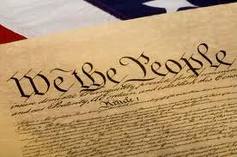 – The 3% increase in conservatives among registered voters occurred entirely among Republicans and already Republican-leaning independents – not because of increasing conservatism among either Democrats or genuinely non-partisan independents. –
– The 3% increase in conservatives among registered voters occurred entirely among Republicans and already Republican-leaning independents – not because of increasing conservatism among either Democrats or genuinely non-partisan independents. –
From the Democratic Strategist
By Ed Kilgore
It’s becoming more and more obvious that the big dispute at the heart of most arguments about the larger meaning of the 2010 midterms elections is whether the U.S. electorate is moving ideologically to the Right in a way that gives Republicans a natural majority in the future. And the very core of that dispute involves the behavior of self-identified independents, who obviously shifted towards the GOP between 2006-08 and 2010, and who seem to be exhibiting more conservative attitudes generally.
Is this the same electorate across elections? Are these the same indies across elections? Or to put it another way, how much did the 2010 outcome depend on voters changing their minds as opposed to some voters showing up and other voters not showing up? And among independents in particular, is their voting behavior a function of reversible factors (e.g., the performance of the economy) or of new ideological proclivities?
We asked TDS Co-Editor Ruy Texeira, a well-established slicer and dicer of the electorate, these questions, and here is his immediate reaction:
Has the public shifted sharply to the right ideologically? Conservatives say the 2010 election proves this, But careful analysis of available data shows there is far less to this argument than meets the eye. Here’s why: Conservatives turned out heavily for the 2010 elections but, among registered voters as a whole, the percentage of conservatives only increased by 3% between 2006 and 2010 In the 2006 election 32 of percent of voters were conservatives according to the exit polls. In 2010 42 percent were conservatives. So what explains this 10 point increase?
Have registered voters as a whole become that much more conservative over that time period? No, according to Pew the percent of conservatives only went up 3 points over that time period. So the increase in self-identified conservatives among actual voters is not nearly accounted for by the increase in conservatives among registered voters. This suggests exceptional turnout of conservatives in 2010 even controlling for the increase in their numbers.
The 3% increase in conservatives among registered voters occurred entirely among Republicans and already Republican-leaning independents – not because of increasing conservatism among either Democrats or genuinely non-partisan independents.
But why do we have more conservatives today among registered voters? That is an interesting question with an interesting answer. Working from the Pew data, one part of the answer is that self-identified Republicans have become more conservative (by 4 points).
The other part of the answer is that independent registered voters have become more conservative (by 7 points). But why have they become more conservative? The answer is that Republican-leaning independents, just like ordinary Republicans, have become more conservative (also by 7 points) and that Republican-leaning independents are now a larger part of the independent pool (now 40 percent of independents compared to 30 percent in 2006). As political scientists have noted over and over again independents who lean toward the Republican party act very similar to Republican partisans (and Democratic leaning independents act like Democratic partisans), so this is a hugely important fact in understanding the changing political behavior of independents.
Among the rest of the independent pool, there has either been no change in the number of conservatives (among non-leaning or pure independents) or a slight decrease (among Democratic leaning independents). So the increase in “conservatism” among independents is completely accounted for by the increased conservatism of Republican-leaning independents and the increased weight of Republican-leaning independents among independents as a whole.
There are now more Republican-leaning independents among independents in general than there were in 2006, but the main reason is that the number of actual Republicans has significantly declined.
OK, so why has the weight of Republican-leaning independents among independents increased? This is a tricky question, but possibly the most important single factor is that there has been an actual decrease in the number of straight Republican identifiers among registered voters (down 2 points) which has produced a concomitant increase in the number of Republican-leaning independents over the 2006-2010 time period. It’s also interesting to note that that this switch can account for most of the 3 point overall increase in independents over the time period.
Putting it all together, here’s how Ruy sums it up:
So overall we’re shifting Republicans around between straight identifiers and leaners, both straight Republican identifiers and leaners have become more conservative over time and they turned out at very high levels in 2010.That’s the basic story. There is no big ideological shift here viewed across registered voters as a whole. It’s overwhelmingly an intra-Republican story.
To put Ruy’s analysis another way, people who are by and large going to vote Republican in most elections have become more conservative, and they did turn out disproportionately in 2010, for all sorts of reasons, including their age and ethnicity. This is not the same as suggesting that “swing voters” are moving to the right. It’s the failure to understand that a majority of independents aren’t really “independent” that sustains the illusion that indies are primarily swing voters who are now swinging hard to the Right and to the GOP.
ATTENTION READERS
We See The World From All Sides and Want YOU To Be Fully InformedIn fact, intentional disinformation is a disgraceful scourge in media today. So to assuage any possible errant incorrect information posted herein, we strongly encourage you to seek corroboration from other non-VT sources before forming an educated opinion.
About VT - Policies & Disclosures - Comment Policy



